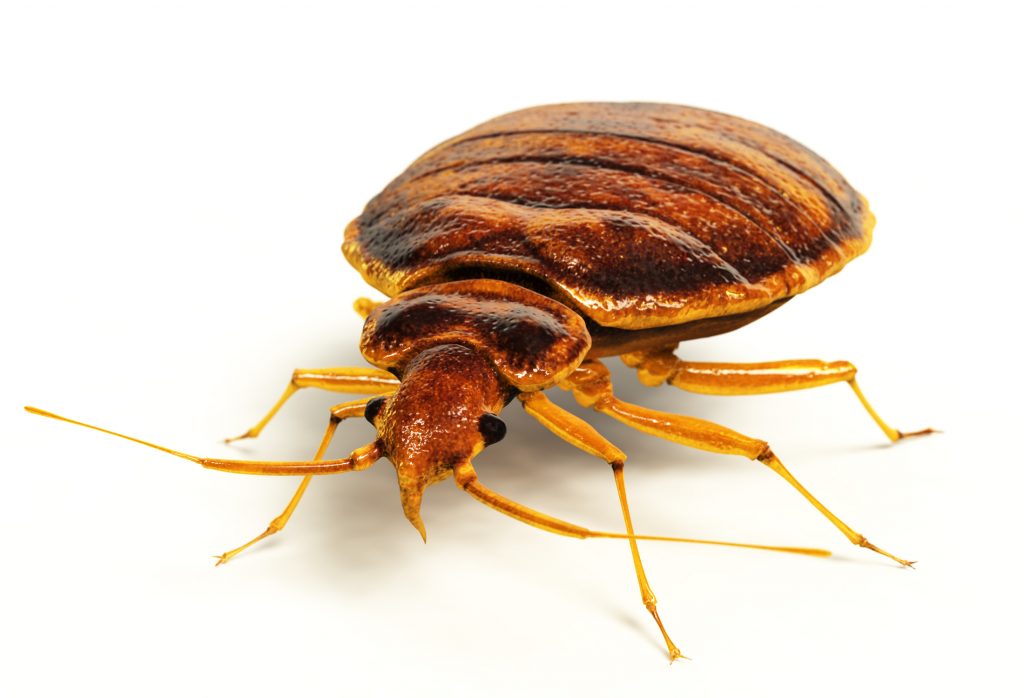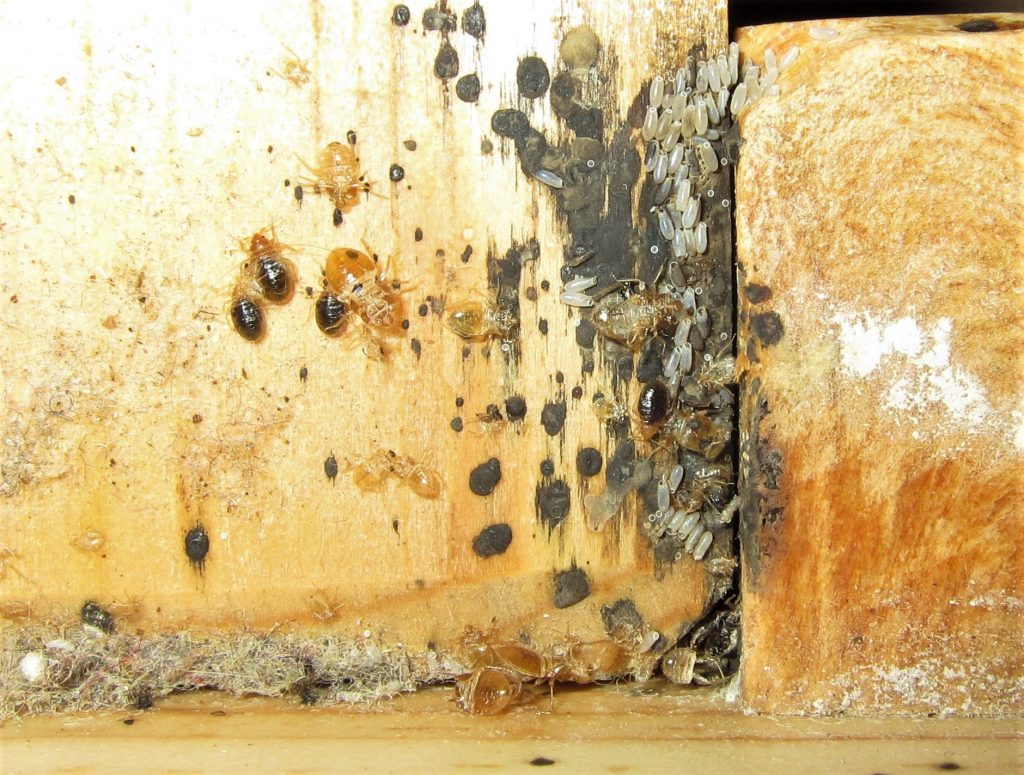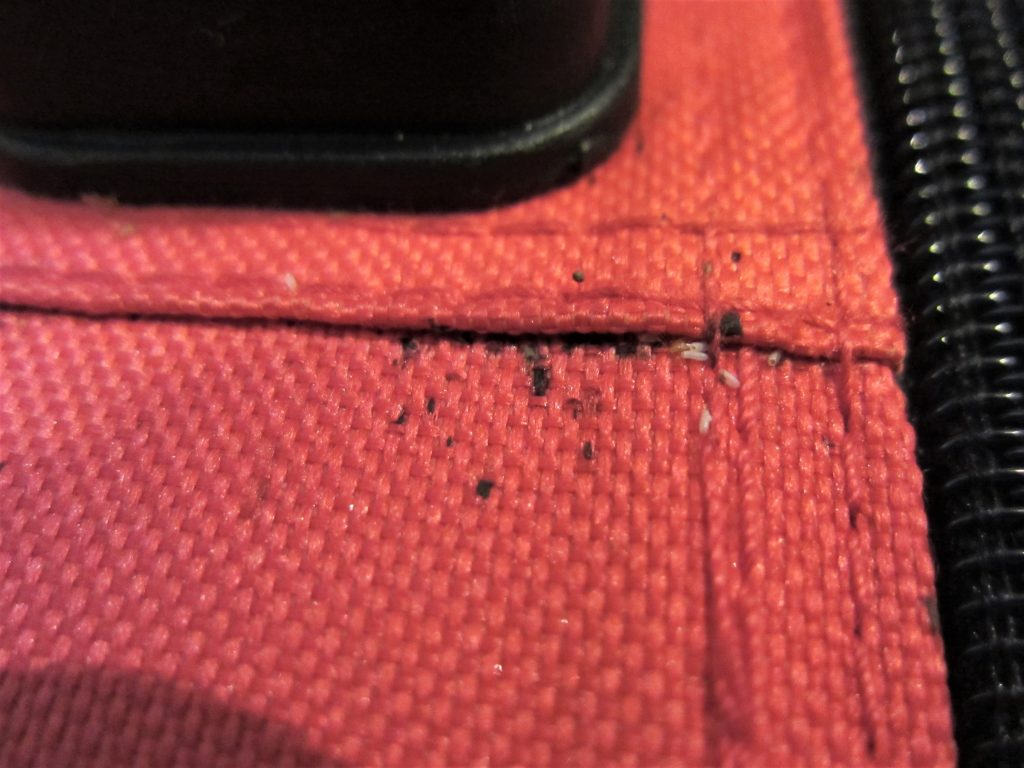
No matter the time of the year, bedbugs can always be a nuisance. Especially when travelling they are often “transported” back and forth without us being aware of it. Therefore, it is especially important to be prepared and to recognize early when bedbugs are about to settle in your own home.
Bedbugs then and now
The small bugs were a very common pest in the United States at the beginning of the 20th century but were virtually exterminated shortly after the Second World War by the widespread use of synthetic insecticides.
For nearly five decades, bedbugs were found only sporadically in the United States, until reports of their existence increased again in the late 1990s.1
Today, well-attended shelters are a predestined place for the spread of bedbugs. The number of business, package and city travelers around the world is steadily increasing, contributing significantly to the spread of bedbugs. Bedbugs lurk in hotels, inns and youth hostels and hide in the luggage of travelers and/or find their way to our home via airplanes, ships, buses and trains.2
The assertion that an infestation is caused by a lack of hygiene is a misconception. The small insects don’t care how clean or unclean the environment is, but bedbugs can be detected and fought more efficiently in tidy/clear areas.3
No matter if hostel or five-star hotel, with the increase of mobility the probability of a bedbug infestation increases.2
What are the dangers of bedbugs?
In principle, the level of knowledge about bedbugs in the population is very low. Bedbugs are often not recognized or confused with other insects, so that an infestation remains undetected for the time being and can spread over a longer period of time.3 In regions where mosquitoes exist, initial bites are often attributed as mosquito bites.
Bedbugs are bloodsuckers and love to bite us humans. Some do not even react to the bites and often it can take some time, a week or longer, until the affected person notices the bites or an infestation. Small red spots or bumps are typical symptoms, similar to mosquito bites, but they are usually very itchy and often last several days. Very often the bites appear in a line or in groups, but because they vary greatly, they are often misdiagnosed.4
Researchers have shown that bedbugs can carry various pathogens such as hepatitis B, C, HIV or other diseases.5 However, in laboratory tests bedbugs have not yet shown that they are able to transmit such diseases.3
Characteristics and properties of bedbugs
An adult bedbug is about 0.5 cm long. Its body is oval, flat and thin when it has not fed, but becomes rounder after a blood meal. Depending on its age and the amount of blood meals, it is yellow-brown to rust-red or dark brown in colour.
The female bug lays one to five eggs a day and between 200 and 500 in its entire life (up to one year old). The eggs are sticky and well placed and hidden by the female in cracks and crevices. Under good conditions, the eggs hatch in about seven days. Nymphs also require blood meals to grow. Bedbug nymphs molt a total of five times during the development phase. The development from egg to adult bedbug takes about 21 days.6
These insects are predominantly nocturnal and feed exclusively on blood, which they also need for reproduction. Bedbugs also get food from birds and other animals, but humans serve as their main host.7 They are attracted by heat, CO2 and body odor.8 When the host sleeps, they crawl over the mattress and usually bite us where the body touches the sheet. After about 5 to 10 minutes they are full and return to their hiding place where they spend most of their time.9
Bedbugs are masters at hiding. In our home there are abundance of hiding places. They are to be found in the smallest cracks and crevices, in bed frames and in sofa beds. They can also be found in other wooden or upholstered furniture, in and behind picture frames, in light switches and wall sockets, etc. This makes it very difficult to fight an infestation. In addition, bedbugs have over the many years developed high resistance to modern insecticides. They can survive several months without food.3
Prevention with Bio/Clean Kill and on journeys
The aim is to keep your own four walls free of bedbugs. Our products BIO/CLEAN KILL (both Classic and micro-fast) are a very valuable tool in helping to prevent an infestation. BIO/CLEAN KILL can be used indoors in all areas where bedbugs can exist. Spray mattresses, bedsteads, bedside tables, upholstered furniture, corners and cracks, etc., where the small bugs would feel at home, thoroughly until they are moist, but not wet so that it drips. The application can be repeated every few weeks.
If travel is imminent, luggage can also be sprayed thoroughly inside and out before use to prevent bedbugs from being brought home. BIO/CLEAN KILL products can also be taken on your journeys; in many countries there are practical small bottles that can be bought and easily packed.
But if you already know that you have a bedbug infestation, you should contact a professional pest control company. Only a specialist can ensure that an infestation is brought 100% under control.
Market specific: If Bio/Clean Kill Extra micro-fast is not available (blue label), please use Bio/Clean Kill Original or Classic (green label).
How to recognize a bedbug infestation
Bedbugs can be very difficult to find, especially if it is a light infestation and no hiding places can be found.
A first indication would be, for example, if bites occur at a time of the year when no mosquito bites are to be expected.
As already mentioned, there are places where bedbugs feel very comfortable. Look closely at your bed, especially mattress and slatted frame and examine the surroundings (bedside tables, upholstered furniture, etc.). Look for black ink-like spots and cast skins which are especially found in their hiding places.

You should be particularly careful when purchasing used furniture and objects and check for traces of them!
When travelling, it is advisable to check the room for bedbugs when you first enter and if necessary, to change rooms. Luggage should be stowed as far as possible from the bed so that the little bloodsuckers are not given the opportunity to settle on or in it.

If you are unsure whether you have come into contact with bedbugs during your holiday, you can firstly isolate your luggage by placing it in the bathtub for closer examination. Here you will quickly be able to see if bedbugs are present.3 If necessary, suitable pieces of luggage can also be sprayed with BIO/CLEAN KILL to ensure that possible bugs do not live on at home after the trip.
Why don’t you feel bedbug bites right away?
Bedbugs are very clever, because before our bodies react to the saliva of the bedbugs and the bite begins to itch, it can take its blood meal undisturbed without us noticing it. Why?
Like many other insects, bedbugs have a very complex mouth. Among other things, they have a saliva channel and a channel to suck up the blood. The anticoagulants keep the blood liquid for a good absorption and the anesthetic secretion ensures that we do not feel the bite and that the little bloodsucker can absorb his food undisturbed.
After some time, however, the human immune system recognizes the foreign body, releases histamine as a protective mechanism in the body and thus causes local inflammation and itching.9
The prevention of bedbugs is extremely important as these small insects can spread very easily if we are not alert enough. A large infestation is very difficult to bring under control without the use of a professional pest management company; therefore it is recommended not only on journeys, but also afterwards to regularly examine your own home and/or treat with BIO/CLEAN KILL.
Click here to see: WORLD OF BEDBUGS – REFERENCES